Four days ago I had a particularly interesting morning on Antelope Island and thought readers might enjoy a chronological reporting of my experience. Some of these images are better than others but as a group these photos of varying quality document my 2 1/2 hour morning on that wonderful island.
Normally I’d include image techs below each photo but this morning I simply ran out of time. Most of these shots were taken with my Canon 7D Mark II with attached 100-400mm lens and 1.4 teleconverter (yes, my 500mm lens is still in the shop…).
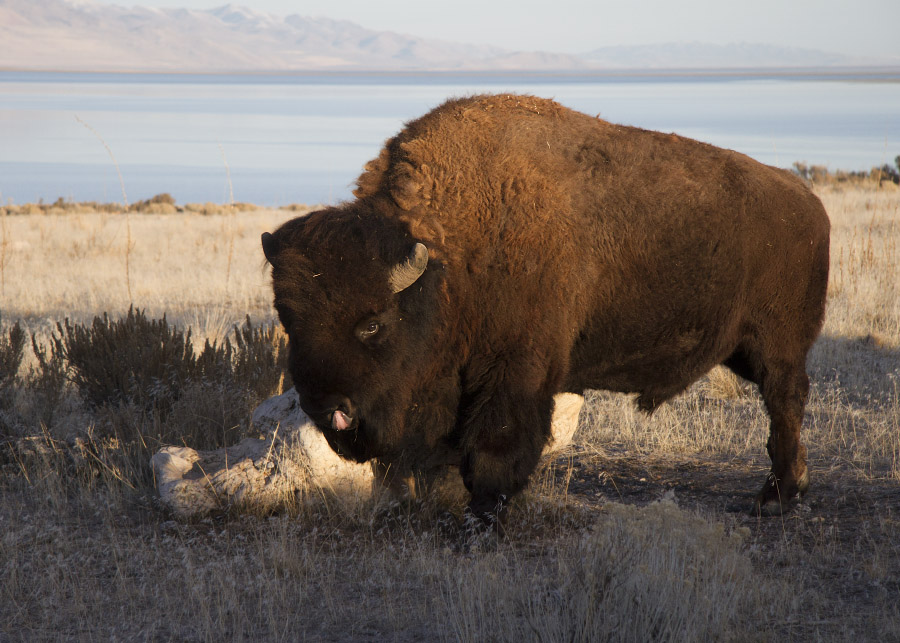
8:30 AM: The first critter I encountered was this bull Bison just as the sun was coming up over the Wasatch Mtns. Just prior to this image he spent quite some time scratching his chin and face on the rock behind him. I like this shot because it shows that interesting bicolored tongue and there’s enough depth of field to allow the viewer to appreciate the setting with a small arm of the Great Salt Lake in the background.
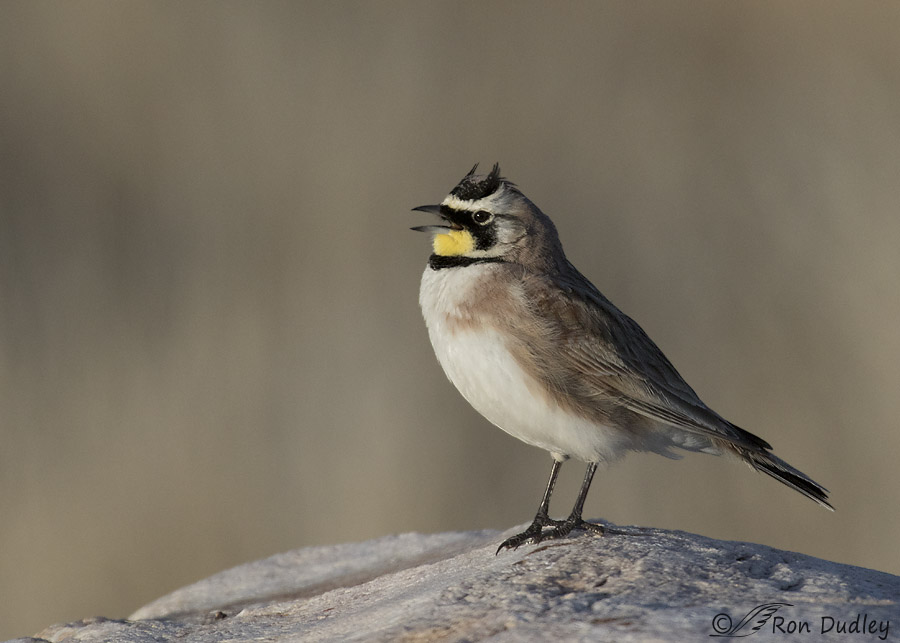
8:40 AM: It was a beautiful spring-like morning and many critters were acting like it truly was spring. I liked the singing pose with erect horns from this male Horned Lark.
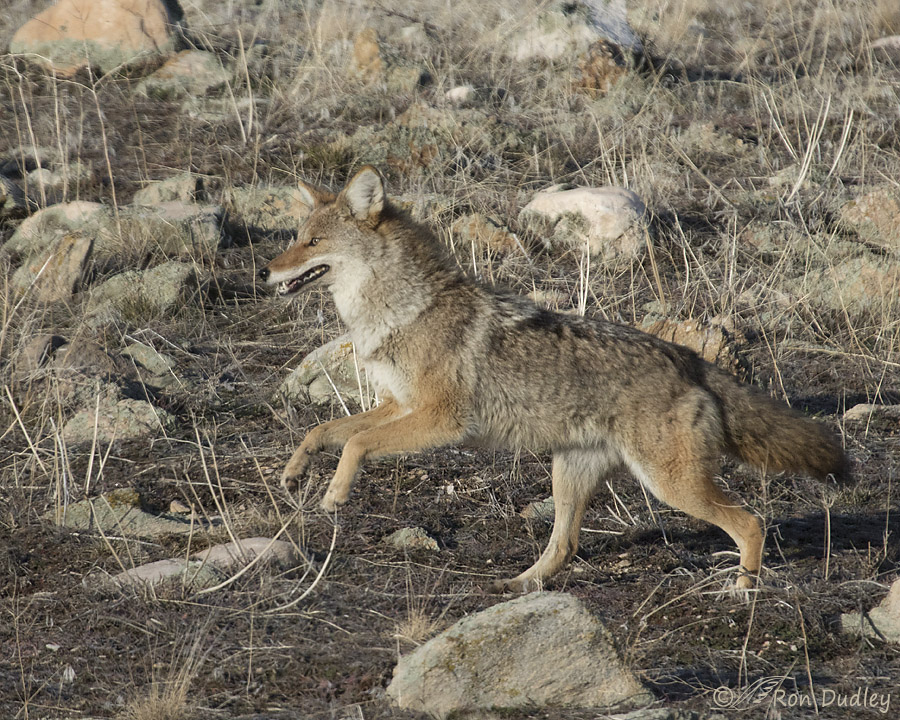
9:04 AM: But this was a morning dominated by coyotes. I saw (and attempted to photograph) interesting behaviors from 8 of them from relatively close quarters. This was one of a pair that had been fighting viciously when we first spotted them but by the time I got my pickup turned around they had become separated by some distance. This one is running toward an elevated spot near the other coyote…
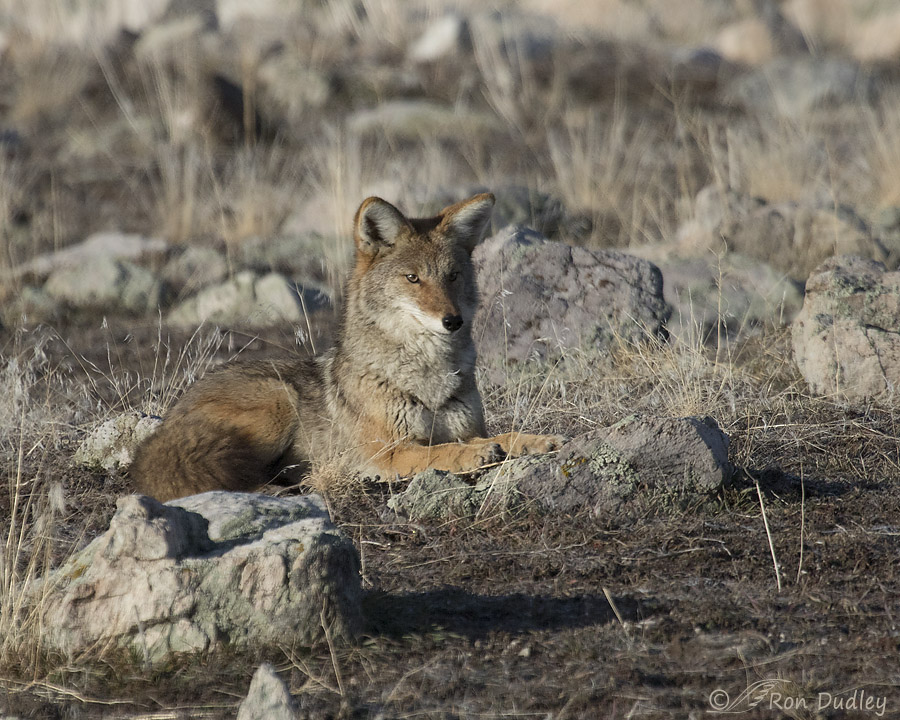
9:06 AM: where it laid down and aggressively stared down the other coyote…
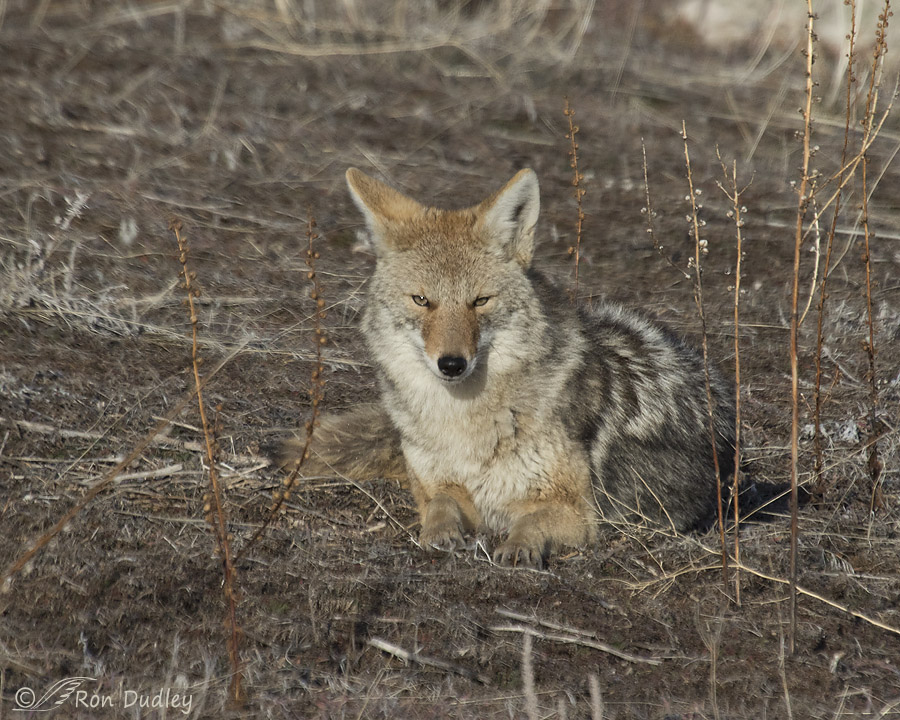
9:10 AM: who assumed a very submissive posture and made a point of not looking back at the more dominant animal.
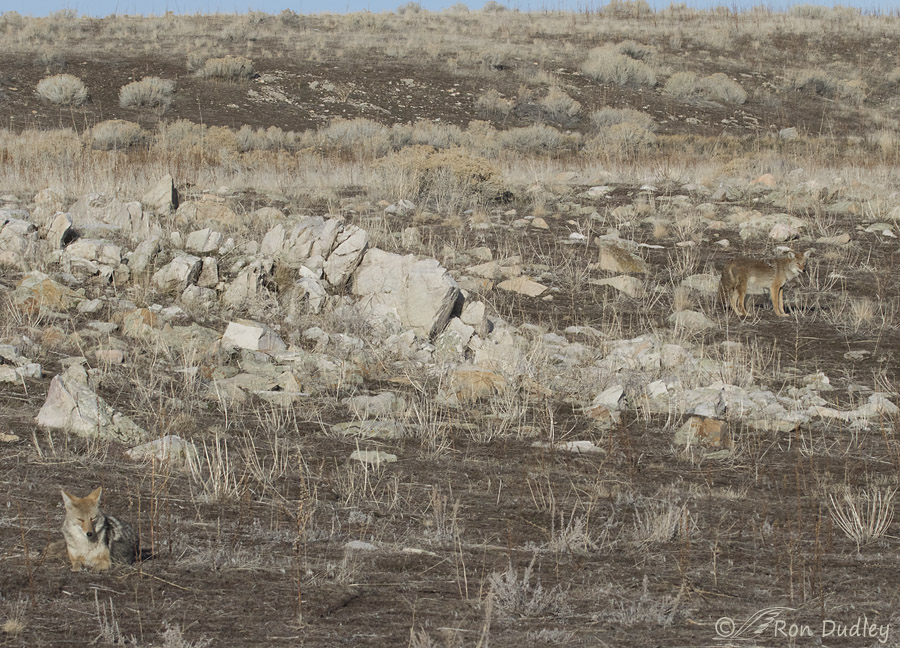
9:12 AM: Eventually that more dominant coyote very slowly wandered off to the right while the other one maintained its submissive pose and avoided eye contact with the other canid so I soon left the area.
Next we encountered a friend who works for the state parks who told us of something interesting that was occurring toward the south end of the island that morning so we headed toward Garr Ranch.
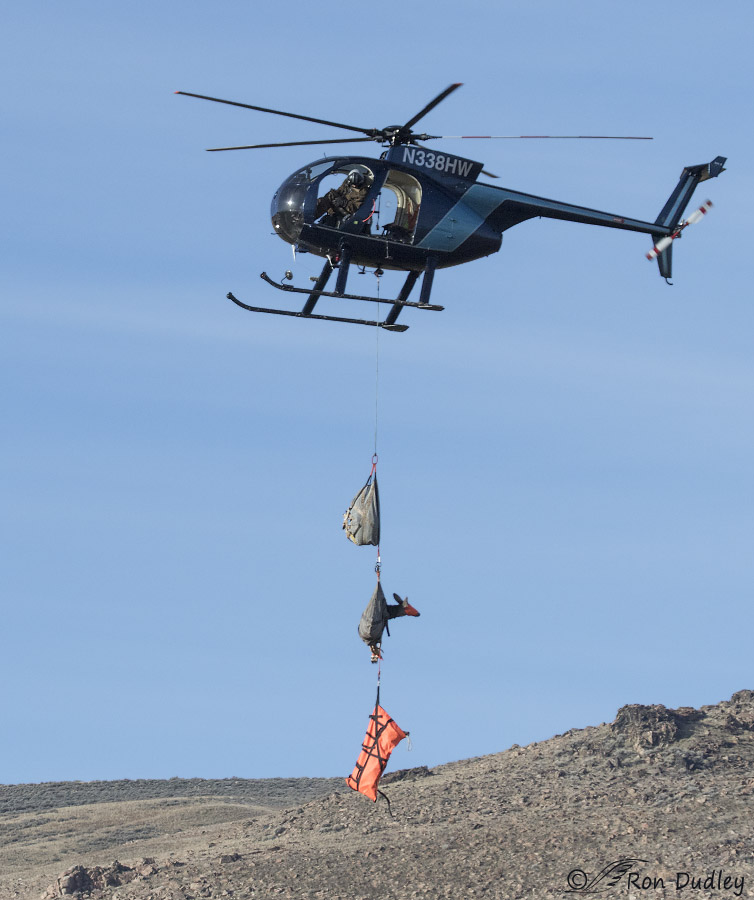
9:42 AM: Utah DWR along with state park personnel and volunteers were in the midst of a Mule Deer transplant operation. They used a helicopter to drop nets on the animals and then return them to a staging area near the ranch where they were examined for health issues and then loaded onto horse trailers for eventual removal to the San Juan River drainage (and perhaps other places) in south-east Utah. I believe that they were only capturing does – no bucks were taken.
Here the helicopter is delivering three deer to the staging area.
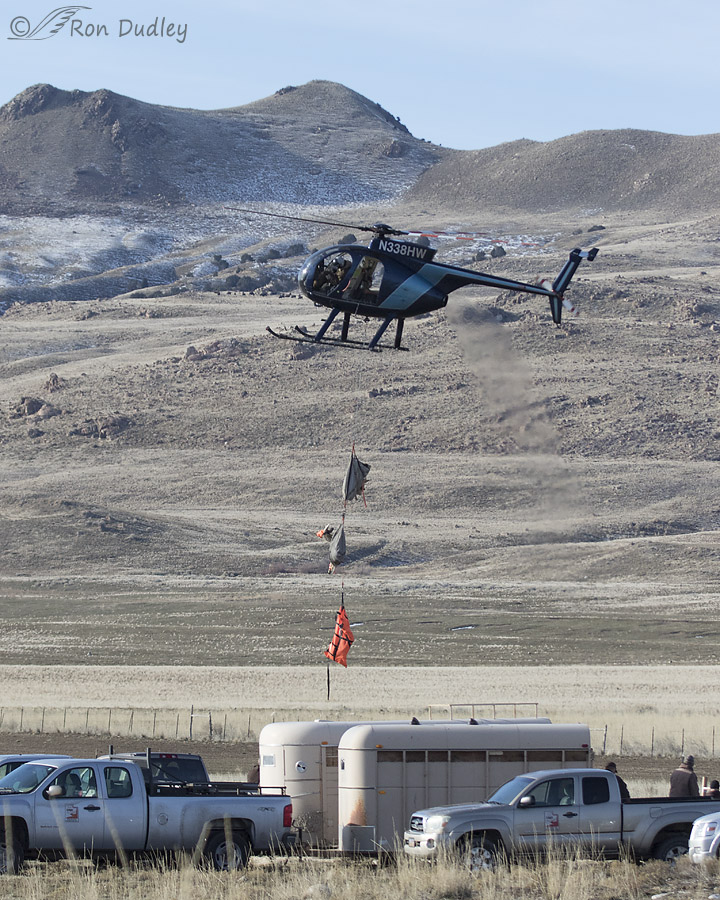
9:43 AM: In this shot the deer are about to be lowered to a spot behind the vehicles where they are met by folks who will carry the animals on a wooden platform to the examination area. This process is always interesting – last year we happened to be very near an area where they were dropping nets on the deer. It was fascinating, exciting (and loud) to watch.
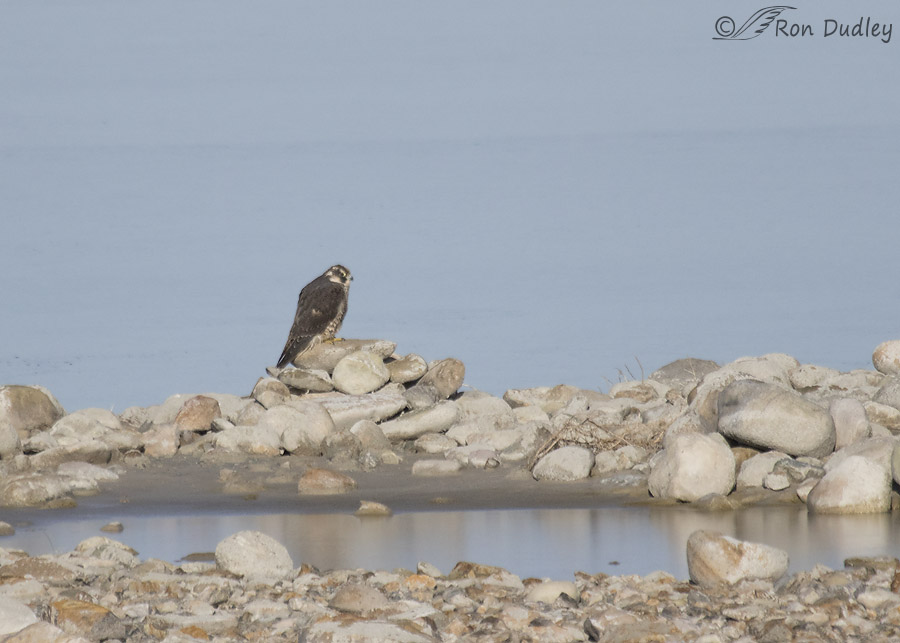
10:11 AM: Soon we were back on the causeway and on our way home when we spotted this Peregrine Falcon out on “the jetty” but it was much too far away for decent photographs, especially with the 100-400mm lens I was limited to.
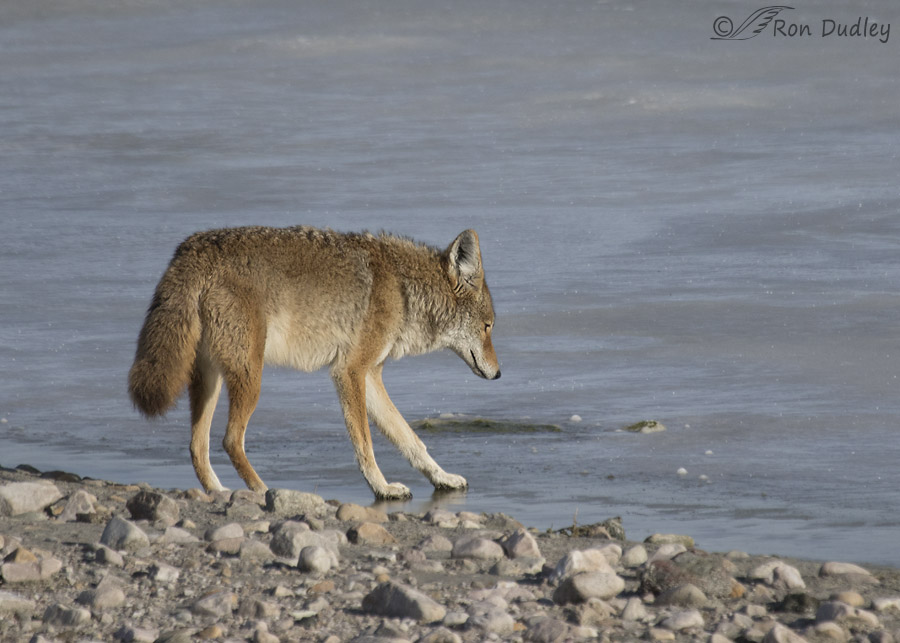
10:17 AM: Next we encountered three more coyotes hunting the causeway as they worked their way east. When this one came to a frozen patch of water it was very tentative about crossing the ice because at the edge the ice was quite thin and every time it gingerly put its left foot down the ice cracked audibly (I could clearly hear the sound from my pickup). It was amusing to watch but after a few steps forward the ice became thicker and stopped making cracking sounds so the coyote did make it across.
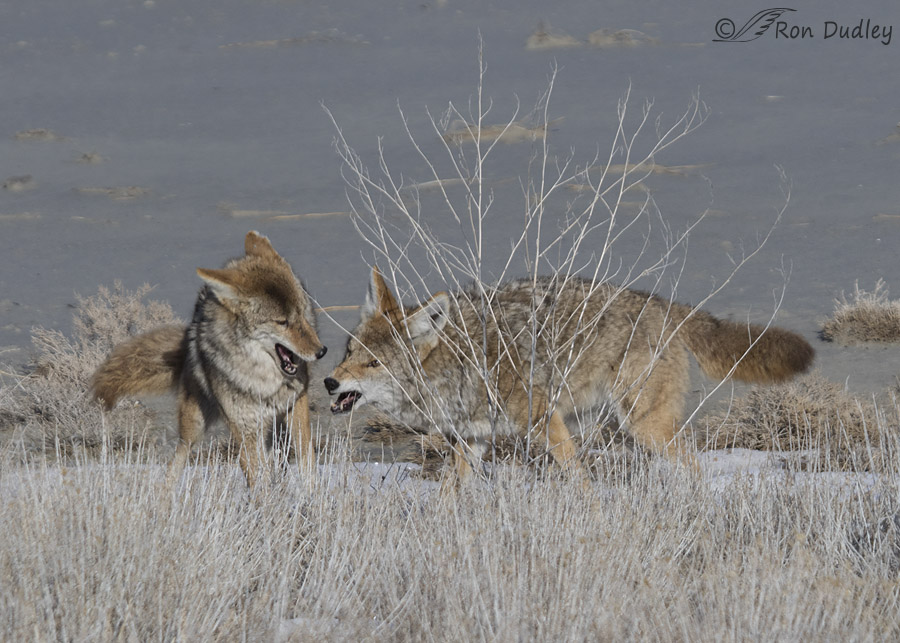
10:24 AM: Two of the three coyotes were hunting voles together while the third maintained its distance from the pair and stayed out on the mudflats. Here the coyote on the right had been digging for a vole when the other animal came in too close and there was a bit of a dust-up. The animal on the left was actually bitten during the brief quarrel but eventually all was apparently forgiven and they continued to move east together as they hunted for voles.
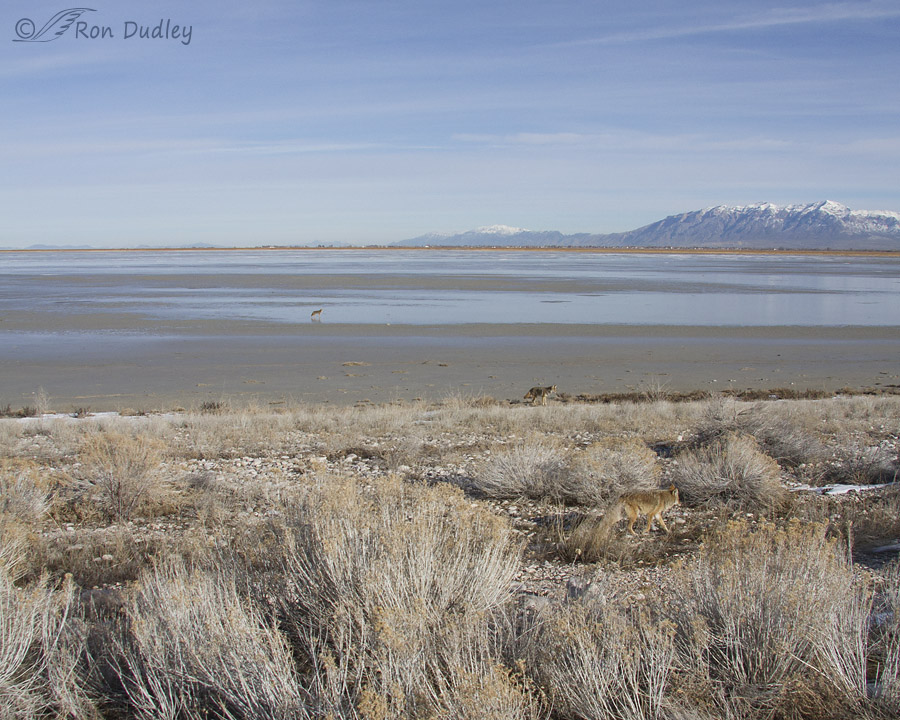
10:27 AM: This shot gives you a feeling for what was happening. The two coyotes at bottom hunted mostly together as they moved along the causeway but the one on the mudflats behind never dared to come in close, though it continued to maintain the pace and direction of the hunting pair. You can see the Wasatch Mountains in the background.
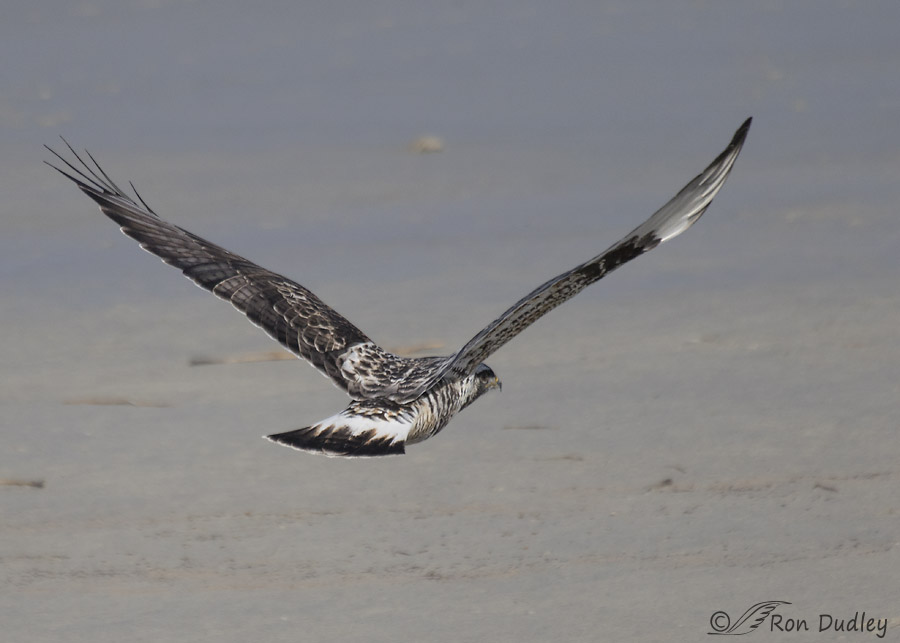
10:34 AM: A few minutes later we found a beautiful Rough-legged Hawk mostly buried in the brush on a very low perch but when it took off it only gave me a few butt shots.
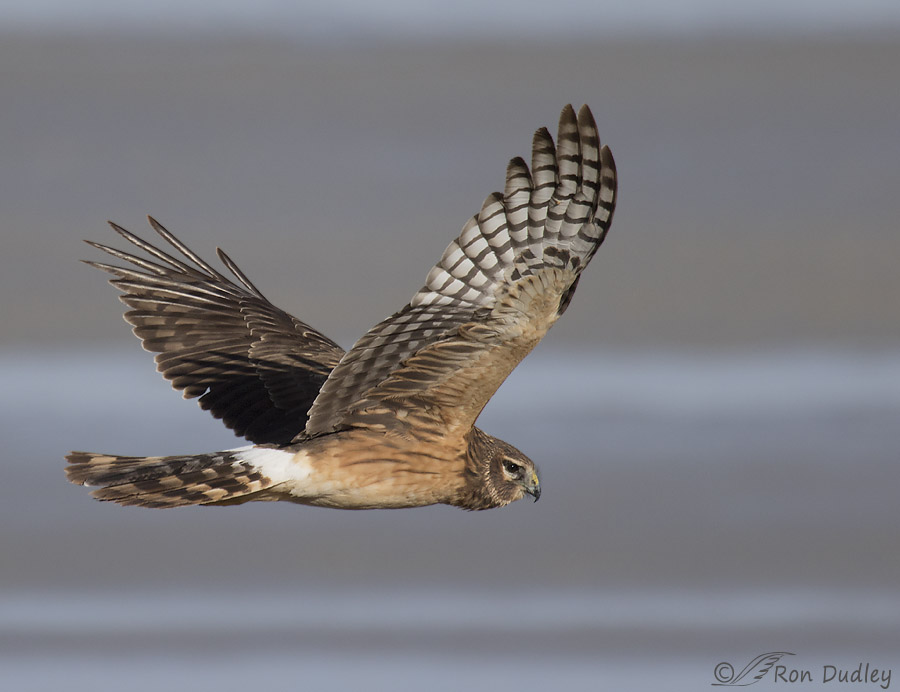
10:36 AM: But this Northern Harrier made up for it. It was hunting into a quartering north wind so in order to follow the edge of the causeway it was always turned slightly away from me as I drove but here it gave me a look back that compensated for that.
I never know what I’ll encounter on the island. Sometimes I return home “skunked”, sometimes I see interesting things but can’t get decent photographs of them and occasionally I get images that delight me. This morning four days ago was a mix of the latter two.
Ron


I missed this post the other day (cat/vet emergency–arrrgggghhh) … But am so glad I thought to check the archive to see what I missed. What a treasure trove! Love them all and so enjoyed the stories to go along with each. The harrier–as always, a real wow! (And, BTW, cat is OK, I’m just $400 poorer. Could have probably bought your old lens with that! Ha.)
Your cat story brought back memories, Chris. Back in the early 80’s my Springer Spaniel, Jake, ate a large rock. It wouldn’t pass and he had to have surgery that cost $260 – a lot of money for me back then. The surgery was successful and Jake had a long life – long enough to eat several more rocks. Boy, we do love our pets, don’t we?
Thank you for the kind words on this post.
Ron, Mia, I stand corrected. I believe you are right. They really are quite close in appearance aren’t they. I will look for the Peregrines from now on. Thanks, Darol
They’re often out there during winter, Darol. Usually too far out on the mudflats for good photos but occasionally you can get lucky.
Wow, what an awesome day you had, the photographs and story are great!
Thank you, Ken. Yes, it was a morning full of surprises. I hope your issues with loading our blogs have now been permanently solved!
Ron, are these with your older version of the 100-400? Pretty impressive, especially with a TC!
Yes, Mike – that old dinosaur of a lens (appropriate for me though it may be). I still don’t have the 500 back and I have the newer version of the 100-400 on order. I’m running out of patience on both…
Darol, the bird near the water is a sub-adult Peregrine Falcon of Tundra subspecies. Notice the top of the crown is still a bit light and juveniles of the Tundra subspecies do have a light supercilium over the eyes.
My image can be seen here for comparison of the light crown: http://www.onthewingphotography.com/wings/portfolio-items/sub-adult-peregrine-falcon-tundra-subspecies/
Mia
Amazing images Ron and always enjoy your skills as an chronicler of the natural world.
Ron, My eye tells me that your described Peregrine is more like a Prairie Falcon. Revisit the picture and let me know what you think. It has white above the eye which I believe the Peregrine does not have. We have seen and photographed Prairie Falcons at Antelope but never have we seen a Peregrine. Just my thought to you. Darol
Darol, I thought it looked like a juvenile Peregrine, tundra subspecies, but then I’m no authority on the subject. The tundra juvenile Peregrines do have white/cream above the eye. That said I’m still not absolutely confident of my ID.
I’ve seen and photographed Peregrines on the Antelope Island causeway many times. They hang out there to hunt ducks. Example below:
https://www.featheredphotography.com/blog/2012/01/04/peregrine-falcon-feeding-behavior-graphic/
Thank you, Dave and Diannemarie.
Nice.
Wow! Wonderful morning, beautifully illustrated.
What an incredible morning. Thank you so much for sharing the magic. The bison? Amazing. A monolith with power. Loved the horns on the lark. And the coyotes. And the birds. I suspect my heart would have been in my mouth watching the deer lift. I have been scrolling up and scrolling down. And revelling in your images.
Thank you, EC. I can tell you liked the post which pleases me very much.
What a great morning! Life is good and even better when hunting with a camera. Thanks for you pictures. You make every day fun.
Len
“Life is good and even better when hunting with a camera”.
Well said, Len. I couldn’t agree more.
Ron, I love this chronicle. What an eventful day you had! Within the span of 2 and half hrs you had seen 6 species. I love the shot where the 3 coyotes are almost parallel to each other and Wasatch mountain is at the backdrop.
Thank you very much for posting the day like this! It made the blog more interesting.
I thought I’d try the “chronicle” as a new approach, Rima. I’m happy that you approve!
Ron, I’ve been watching and enjoying your blog for about a MONTH NOW. As a fairly advanced amature photog myself, I really enjoy your work and chatting with you and Mia when the opportunity comes my way…especially loved the coyotes today. Keep it up!!..Jer
Thank you, Jerry. Nice to know you’ve been hanging around my blog for a while and I appreciate the encouragement.
Wow! What an interesting morning, sensational happenings and fantastic shots! Thanks for sharing!
Charlotte
Thank you, Charlotte.
What is the situation with the Mule Deer? Amazing lift operation. Are there just too many for the habitat? Or, are they needed somewhere else? Very interesting day you had. It was interesting to see more background with the range of the shorter lens.
“What is the situation with the Mule Deer?”
Johanna, this is my understanding of the situation. Hunting of mule deer on the island is extremely limited because it’s a state park and deer density can become too high for the carrying capacity of the island so each year they transplant a number of them to other areas of the state (and elsewhere). They do something similar with the bison (though it doesn’t involve helicopters…) – they try to keep the bison population down to roughly 500 animals.
That big bull Bison looks like it might be part Mack truck….or tank. I remember getting the “once over” from one of those guys about a week after a different one had over turned a small car that had stopped to take its picture. My once over probably lasted minutes, or even seconds, but seemed to take a whole lot longer! My wolf-dog companion froze. I don’t think he even breathed…
As you’re obviously aware, Patty, when you get close to a large bull their massive size is very, very impressive. I’ve seen (and photographed) some folks doing extremely dangerous things up close to bison on the island.
It’s difficult to overestimate the stupidity of some of our own species…
The stupidity of our species is graphically illustrated by the boy at Yellowstone National Park (age 8-10, probably) who wanted to kick a buffalo in the behind (that’s not what he said…). I was accidentally fairly close to where a pair of males went stampeding by on a different visit, and that was scary. It was kind of like my more recent experience of coming to understand flash floods. Both the water and the bison are very, very powerful, and we need to be careful around both.
What a wonderful series!! Especially love the horned lark’s exhuberance and the sly, out of the corner of the eye glance and cocked ear toward the aggressor pose of the more submissive coyote.
Thanks very much, Patty. The tension between those two coyotes (who had been fighting just minutes before) was palpable.
WOW! Great shots Ron, very interesting behavior relative to the three coyotes. I have always wondered what happens to the adult pups of a litter when they have to fend for themselves. The drive to reproduce and pair bond is always there and males are looking for mates, but what happens to the less dominant individuals? It’s a tough world out there especially now with less and less room for animals to expand.
You hit the nail on the head, Dick. There’s a lot of tension and squabbling among the coyotes right now as the established pairs and loners try to work out their social status. And of course their room for expansion on the island is finite. Thank you.
Definitely a great day for seeing a variety of critters. Any of them would make my day. I’m curious if the water levels are low in the Great Salt Lake or if there are always mud flats.
Both are true, Susan. There’s always mudflats but the water level is also very low this year. In fact the 7 mile long causeway is mostly bordered by mudflats right now – there isn’t much water except for perhaps the last mile before you get to the island. That fact has limited viewing and photography opportunities for many birds along the causeway. Hopefully spring runoff will raise the water levels significantly.
Wow!,
What a great place and variety of wildlife especially in such a short time out there photographing. Being on the East Coast, it would be very tough to find those subjects in one outing.
Great pics as always! Thanks..
Thank you, Bill. I don’t want to give the wrong impression though – this was a more eventful morning than usual. Some days I leave the island without even clicking my shutter.
I enjoyed this series, Ron. That last one was breathtakingly gorgeous. The Horned Lark made me smile. He seems so very proud!
Arwen, Horned Larks are very common and (I believe) underappreciated. They’re beautiful little birds and I love their soft, muted song. Thank you.
Beautiful shot of the Harrier. I will be in Park City skiing 2/5 to 2/9, then hope to photograph in Farmington Bay and Antelope Island. Are there any restrictions accessing Antelope Island?
thanx
Rich
No, there are no restrictions, Richard – other than the fact that there’s a fee to use the causeway and access the island. I believe that fee is $9 per vehicle (I have an annual state parks pass).